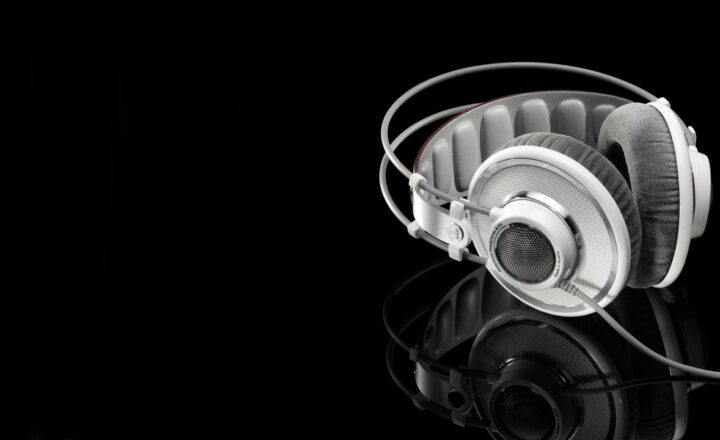The Role of Amplifiers in Sound Quality: How to Choose the Right One for Your Setup
November 13, 2024

When it comes to sound systems, the quest for pristine audio quality often leads enthusiasts to explore a component that might not be first on their list: the amplifier. Yes, the amplifier! This often-overlooked piece of equipment plays a crucial role in delivering exceptional sound quality. Understanding how amplifiers work and how to choose the right one for your setup can make a significant difference in your audio experience.
1. What is an Amplifier?
An amplifier is an electronic device that boosts the strength of audio signals. It takes a weak audio signal from sources like a microphone, guitar, computer, or turntable and increases it sufficiently to drive speakers, creating audible sound. Essentially, an amplifier serves as the bridge between your audio source and your speakers, ensuring that the sound produced is clear, vibrant, and enjoyable.
There are various types of amplifiers, including:
- Integrated Amplifiers: Combine the functions of a preamp and power amplifier in one unit, suitable for simpler setups.
- Power Amplifiers: Dedicated amplifiers that drive speakers directly, often found in more complex systems.
- Pre-Amplifiers: Boost lower-level signals before they are sent to the power amplifier.
- Class A, B, AB, and D Amplifiers: Different amplification classes that affect efficiency, heat generation, and ultimately sound quality.
Understanding the different types of amplifiers is critical to choosing the right one for your setup.
2. The Impact of Amplifiers on Sound Quality
The amplifier is vital in shaping sound quality. A good amplifier will not only add power to the signal but will also ensure that the characteristics of the sound, such as clarity, detail, and dynamics, are preserved.
Here’s how amplifiers impact sound quality:
- Clarity: Good amplifiers minimize distortion, allowing for clear sound reproduction, even at high volumes. Distorted sound can mask details, making it hard to enjoy your favorite music or movie dialogs.
- Power Handling: The power rating of an amplifier (measured in watts) affects how loud your system can go without distortion. An amplifier with adequate power allows speakers to handle sudden bursts of sound without compromising quality.
- Dynamic Range: A quality amplifier can enhance the dynamic range of audio by amplifying soft sounds while managing loud signals well. This creates a more engaging listening experience.
- Speaker Compatibility: The right amplifier matched to your speakers can ensure that they perform at their best, optimizing sound quality across all frequencies.
Without a capable amplifier, even the best speakers and audio sources cannot shine, highlighting its importance in achieving high sound quality.
3. Choosing the Right Amplifier for Your Setup
To find the right amplifier for your sound system, consider the following factors:
- Power Requirements: Match the amplifier’s power output (in watts) to your speakers’ power handling capacity. This guarantees that the amplifier can adequately drive the speakers without distortion or damage. Look for the speaker’s sensitivity rating, as more sensitive speakers require less power to produce high volumes.
- Impedance Matching: Check the impedance of your speakers (measured in ohms) and choose an amplifier that can handle this load. Most speakers have an impedance of 4, 6, or 8 ohms. Ensure compatibility to achieve optimal performance.
- Usage Purpose: Determine the primary use of your audio system — whether for casual listening, home theater setups, or professional applications. Integrated amplifiers may suffice for casual use, while separate power amplifiers might be necessary for high-end or studio environments.
- Sound Quality & Distortion Levels: Look for reviews or specifications that mention Total Harmonic Distortion (THD). Ideally, you want an amplifier with a low THD percentage, as this indicates cleaner sound reproduction.
- Budget: Amplifiers come in a wide range of prices. Set a budget beforehand and explore options that provide the best sound quality within your price range. Consider brands known for quality within your budget, as spending slightly more for a quality amplifier can offer significant long-term benefits.
Taking the time to consider these factors will help you make an informed decision that enhances your overall audio experience.
4. Key Features to Look for in Amplifiers
When shopping for an amplifier, pay attention to these essential features:
- Connectivity Options: Ensure the amplifier has the right connections for your audio sources and speakers. This includes HDMI, optical, RCA, and Bluetooth capabilities as appropriate for your system.
- Built-In DAC: A Digital-to-Analog Converter (DAC) can significantly improve sound quality by processing digital signals more effectively, particularly for digital music sources like streaming services and computers.
- Equalization & Tone Controls: Some amplifiers offer built-in equalizers and tone controls that allow you to adjust the sound balance to your preferences, adapting to the acoustics of your listening environment.
- Remote Control & Smart Features: Modern amplifiers often come with remote control or smartphone compatibility, allowing for easy adjustments without getting up from your seat.
- Brand Reputation & Warranty: Consider brands known for their quality and customer service. An amplifier with a good warranty can provide peace of mind regarding longevity and performance quality.
Evaluating these features can help you choose an amplifier that aligns perfectly with your needs.
5. Setup and Optimization Tips
Once you’ve chosen the right amplifier, optimizing it for your specific setup can further enhance sound quality. Here are some tips for effective setup:
- Placement Matters: Ensure your amplifier is placed on a stable surface, away from heat sources and electronic interference. Proper airflow prevents overheating, ensuring consistent performance.
- Connection Quality: Use high-quality cables for all connections. This minimizes signal loss and interference, ensuring the best performance from your amplifier and speakers.
- Routine Maintenance: Periodically check and clean connections to ensure optimal sound quality. Ensuring that your equipment is dust-free and connections are secure can maintain performance over time.
- Calibration: If your amplifier has automatic calibration features, take the time to use them. Calibration adjusts output levels according to the acoustic properties of your room, maximizing sound quality based on your environment.
Following these setup tips can help you achieve the best audio performance from your amplifier and overall sound system.
Conclusion
Amplifiers play a pivotal role in shaping your audio experience, ensuring sound quality meets or exceeds expectations. By understanding how amplifiers work, their impact on sound quality, and what to consider when selecting one for your setup, you can significantly enhance your listening experience. Pay close attention to compatibility with your speakers, power handling, and desirable features to find the perfect match.
Investing wisely in an amplifier can create a more immersive and enjoyable sound experience, letting you revel in your favorite music, movies, and games like never before.
If you are ready to upgrade or build your audio system, take your time to research amplifiers and embark on a journey to superior sound!








